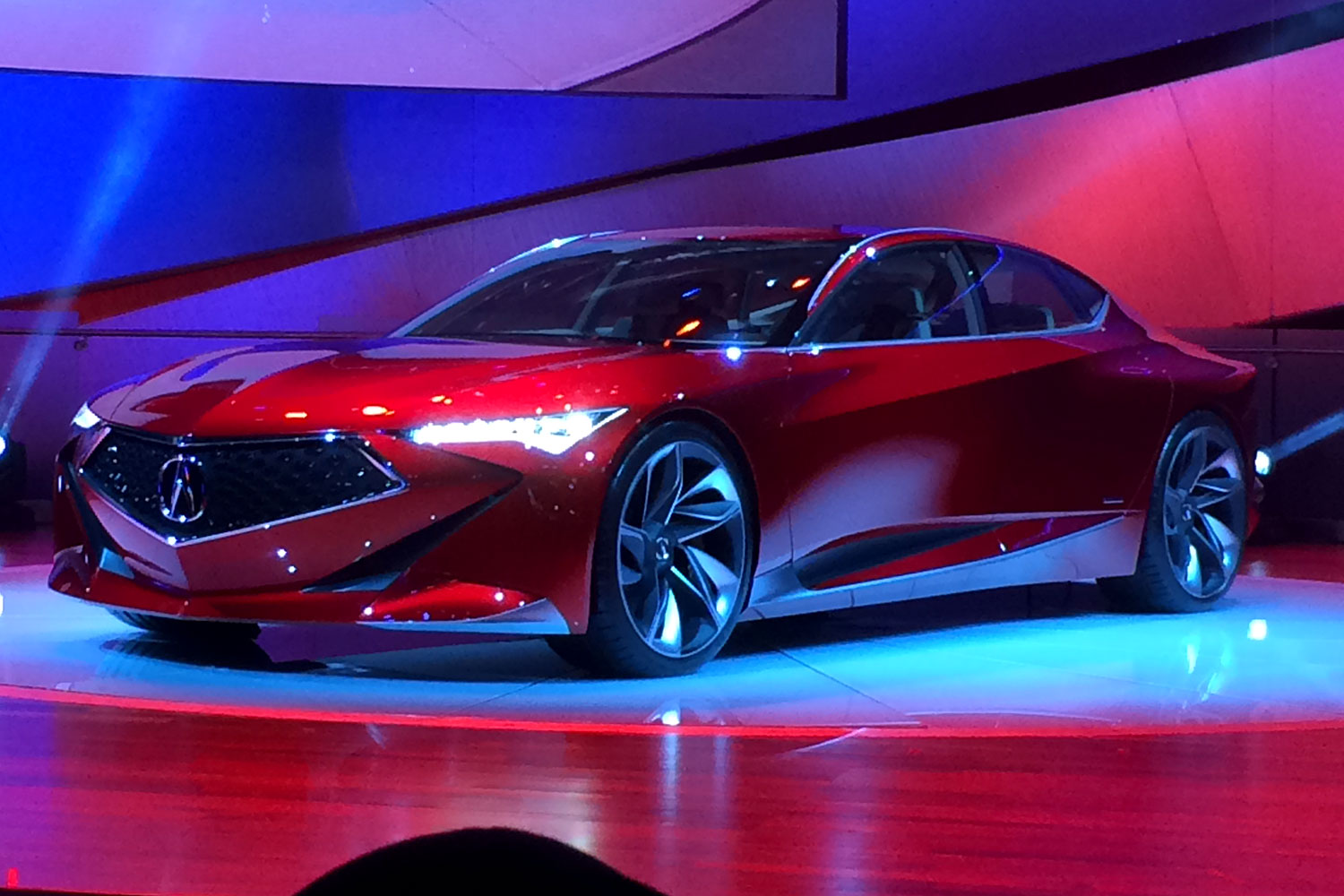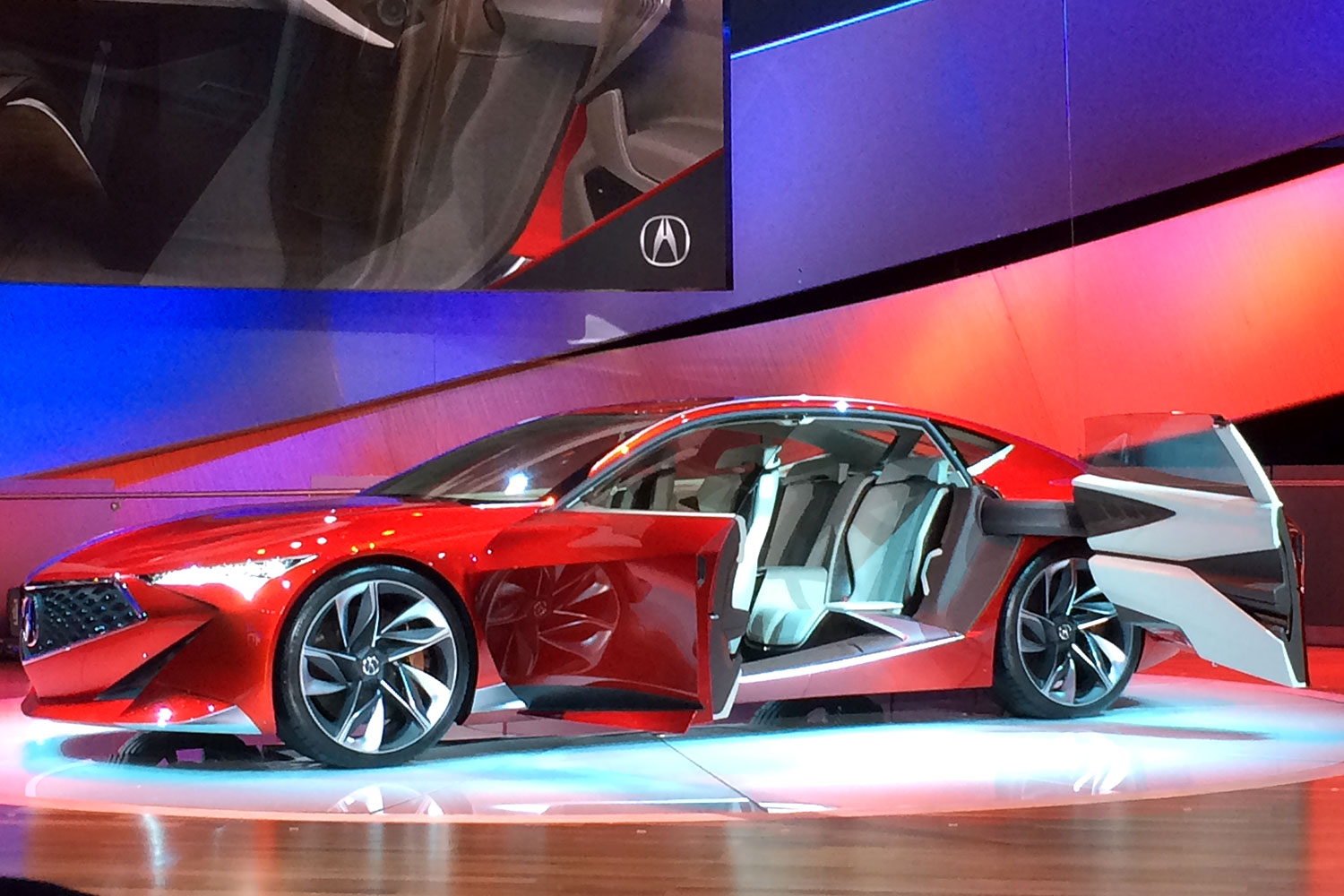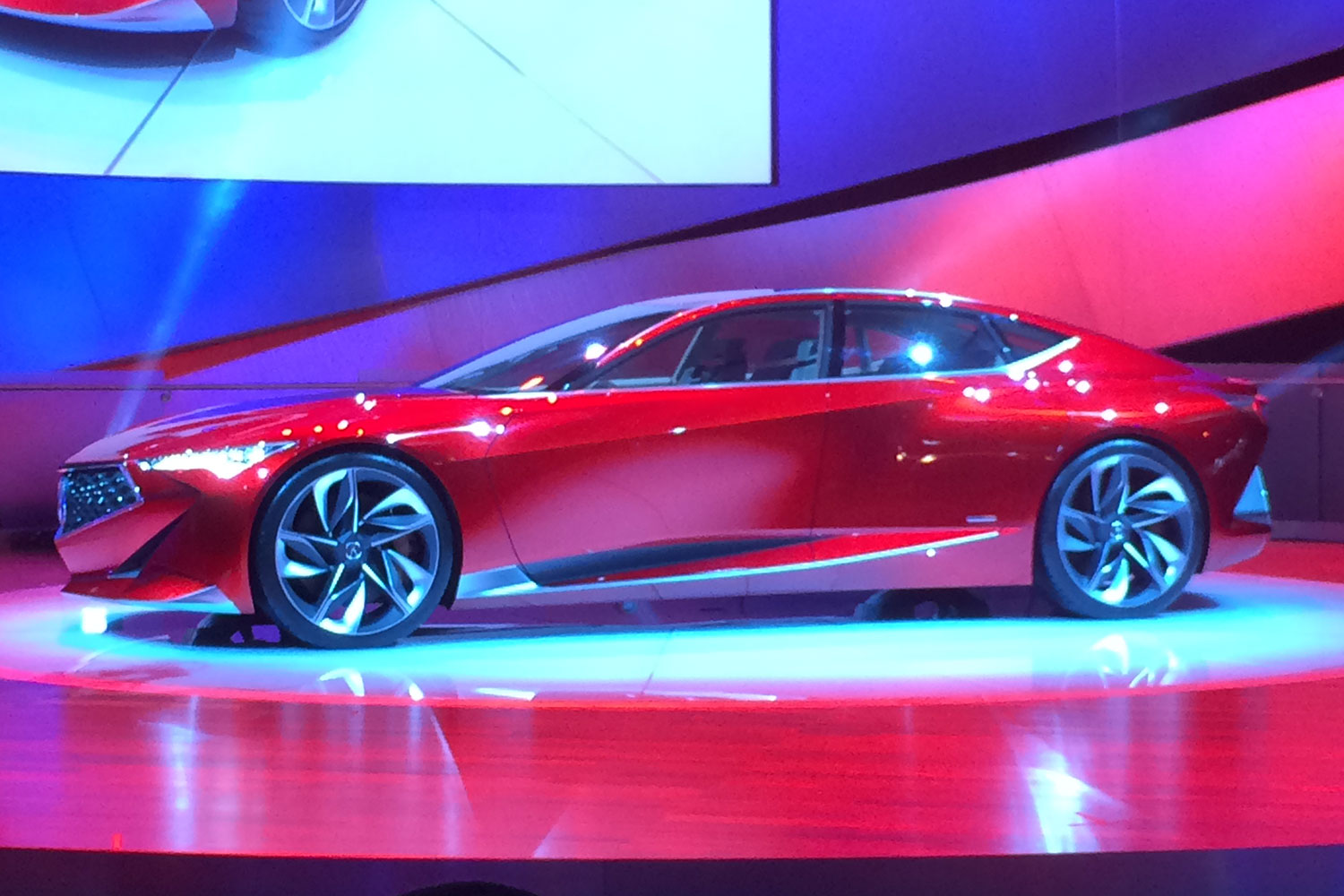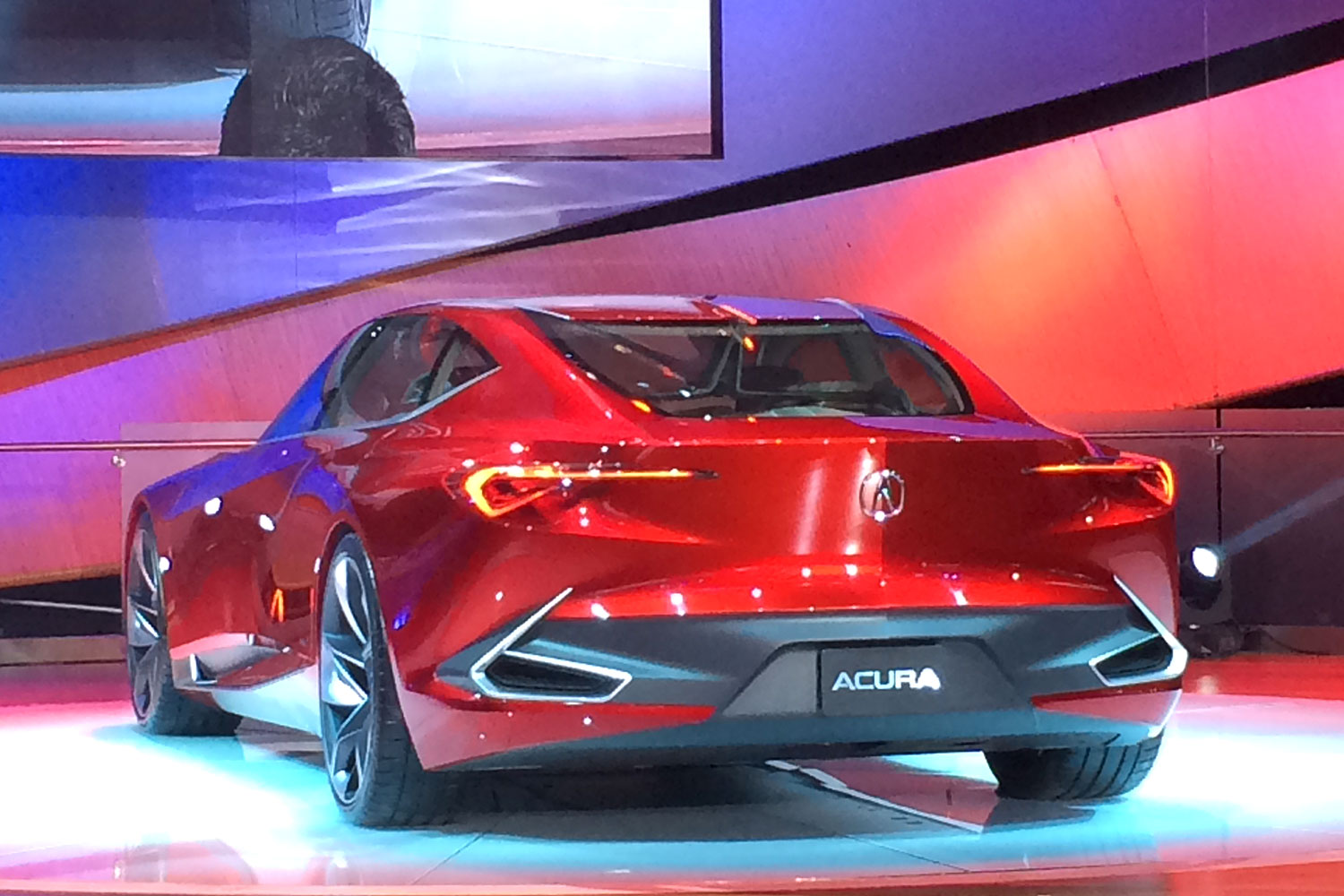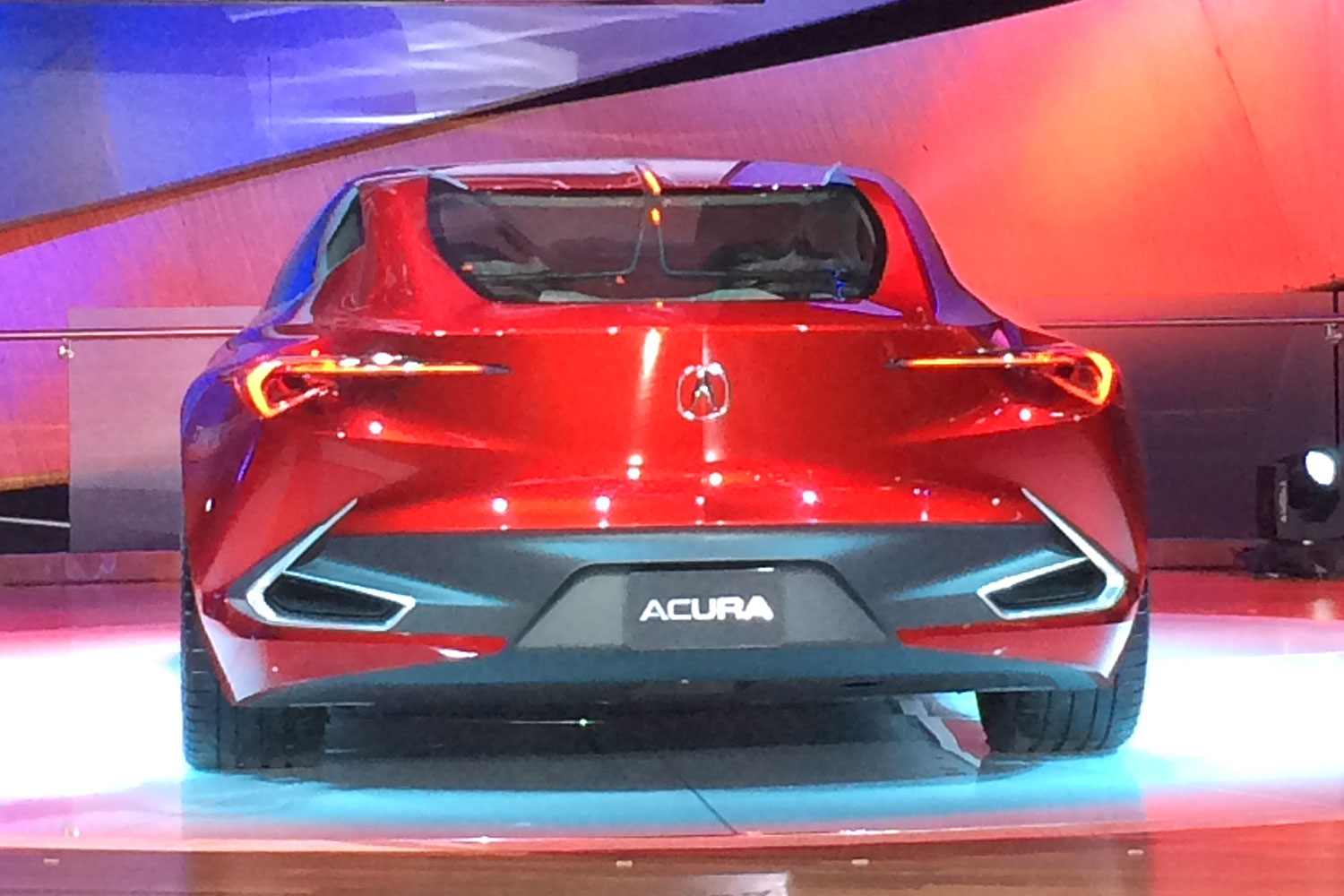Acura makes safe, reliable, and technology-packed vehicles, but outside of the new NSX, they don’t usually make our hair stand on end. At the 2016 Detroit Auto Show, the brand took a step in the right direction with the Acura Precision Concept, which signals a bold new direction for the company.
The angular, ultramodern luxury sedan comes from the Acura Design Studio in California, the very same workshop that penned the NSX’s sharp new body. The concept follows a similar aesthetic theme, with high-contrast lines, sharp, chiseled intersections, and extremely muscular topography. We’re not completely sold on the rear fascia just yet, but the vehicle’s wide stance, Diamond Pentagon grill, and devilish grin are all nice touches. Put it all together and you have a design theme that Acura calls “quantum continuum.”
“The Acura Precision Concept is more than simply a concept vehicle; it is a design study model that literally will shape the direction of all future Acura products around our Precision Crafted Performance DNA,” said Dave Marek, Acura’s global creative director. “The Acura Precision Concept is the leading edge of a renewed commitment to delivering Precision Crafted Performance in every facet of the product experience and creating a powerful and very exciting direction for the next generation of Acura models.”
There’s no word on what powers the Acura Precision Concept, but the automaker did shed some light on the new human-machine interface that highlights the spaceship-inspired cabin. When someone enters the vehicle, the system automatically scans them and loads up their personal preferences for navigation, audio, and customized performance settings. A floating touchpad on the cantilevered center stack gives the driver control over the curved display screen, the proverbial cherry on top of an interior that is just as progressive and vibrant as the exterior. The future of Acura just got a little brighter.
Stay tuned to DT Cars for more news from Detroit.
